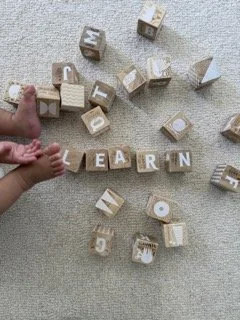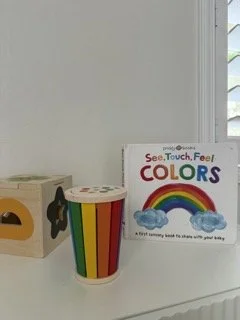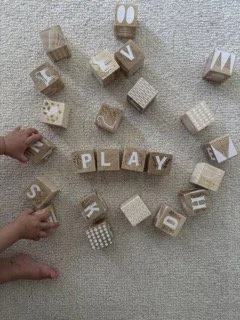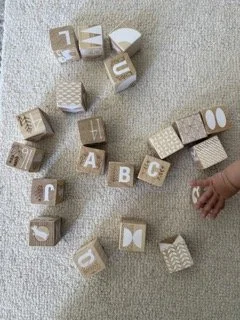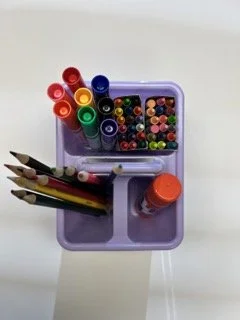Montessori, Waldorf, Play-Based & More: Comparing Popular Early Childhood Education Styles
Choosing the Right Fit for Your Child (or Family)
When it comes to early childhood education, there’s no “one size fits all.” Whether you’re a parent, nanny, or educator, understanding the different teaching styles — and what they’re rooted in — can help you better support a child’s development.
In this post, we’ll break down some of the most well-known educational approaches for young children, including Montessori, Waldorf (Steiner), Reggio Emilia, Play-Based, and Traditional/Academic learning models. We’ll explore their philosophies, how they work in practice, and the pros and cons of each — so you can make an informed decision or simply broaden your understanding.
🌱 Montessori: Independence Through Structure
Founded by: Dr. Maria Montessori (Italy, early 1900s)
Core Beliefs: Children are naturally curious and learn best through self-directed activity in a carefully prepared environment.
Key Features:
Mixed-age classrooms
Child-led work cycles
Hands-on, purposeful materials
Focus on practical life skills and independence
Pros:
Encourages independence and self-motivation
Respectful of each child’s pace
Well-organized, calm environments
Builds concentration and responsibility early
Cons:
May feel rigid or overly structured for some families
Less emphasis on creativity and imaginative play
Can be costly or hard to find quality programs
Montessori Example: The Self-Directed Snack
You set up a small, low table with a banana, a butter knife, and a plate. Your toddler peels the banana, slices it (with support if needed), and sits down to eat.
💡 Focus: Independence, practical life, fine motor skills
🌈 Waldorf (Steiner): Imagination & Rhythm
Founded by: Rudolf Steiner (Germany, early 1900s)
Core Beliefs: Childhood is sacred, and learning should unfold slowly through storytelling, art, music, and a rhythmic daily life.
Key Features:
Delayed academics (no formal reading until around age 7)
Emphasis on imagination, free play, and nature
Daily rhythm with lots of storytelling, handwork, and routine
Natural materials and toys
Pros:
Nurtures creativity, empathy, and connection to nature
Strong sense of rhythm and security
No rush into academics, reducing stress on young children
Cons:
Less focus on academics early on
Some parents may find it too “alternative”
Screen use and media are strongly discouraged
Waldorf Example: Seasonal Storytelling & Rhythm
It's autumn, so you sing a morning song about falling leaves, then tell a story with a felt board about woodland animals preparing for winter. You follow with watercolor painting using warm seasonal tones.
💡 Focus: Imagination, rhythm, connection to nature, storytelling
🎨 Reggio Emilia: Community-Based & Expressive
Founded by: Loris Malaguzzi (Italy, post-WWII)
Core Beliefs: Children are capable, curious individuals who learn through relationships, exploration, and creative expression.
Key Features:
Emergent curriculum based on children's interests
Emphasis on documentation, collaboration, and reflection
Environment seen as the “third teacher”
Art and creative expression are central
Pros:
Child-led, responsive learning
Fosters creativity, communication, and critical thinking
Strong community and parent involvement
Cons:
Can be unstructured without skilled facilitation
Limited availability outside certain preschools
Harder to replicate at home without training
Reggio Emilia Example: Child-Led Project Work
Your child shows curiosity about bugs. You gather books, magnifying glasses, and art supplies. Together, you observe bugs outside, then create clay bug models and document what your child says about each one.
💡 Focus: Emergent curriculum, documentation, creative expression
🧸 Play-Based Learning: Learning Through Joy
Core Beliefs: Play is a child’s natural way of exploring the world and learning essential life skills.
Key Features:
Unstructured or semi-structured free play
Activities that promote social-emotional development, problem-solving, and gross/fine motor skills
Often guided by teachers but not overly directed
Pros:
Builds social and emotional intelligence
Encourages creativity, problem-solving, and resilience
Flexible and accessible to many families
Cons:
May not “look academic” to some parents
Inconsistent quality depending on the program
Can lack clear structure or goals
Play-Based Example: Dramatic Play & Social Skills
Two toddlers set up a pretend picnic using soft toys and play food. You observe and occasionally scaffold ("What else do we need for our picnic?") but mostly let them lead the play.
💡 Focus: Social-emotional learning, problem-solving, language development
🏫 Traditional/Academic-Based: Structured & Skill-Focused
Core Beliefs: Children benefit from early academic readiness and structured instruction.
Key Features:
Set curriculum focused on literacy, numeracy, and school readiness
Teacher-led lessons and group activities
Assessment-driven outcomes
Pros:
Familiar to most parents
Prepares children for school expectations
Clear benchmarks and milestones
Cons:
Can be stressful or developmentally inappropriate for younger kids
Less room for creativity or free exploration
May overlook social-emotional growth
Traditional/Academic Example: Letter Tracing at the Table
After breakfast, you sit with your 3-year-old and practice tracing the letter "A" with a marker on a worksheet. You review letter sounds and give a sticker as positive reinforcement.
💡 Focus: Early literacy, focus, following directions
So, Which One Is “Best”?
There’s no universal “best” — it depends on:
Your child’s temperament
Your family values
Your caregiving style
The programs available in your area
Many caregivers (including myself) borrow from multiple approaches to create a blended, responsive environment. You might combine Montessori's independence with Waldorf's rhythm and play-based flexibility — and that’s perfectly okay.
🧩 How to Choose the Right Teaching Style for Your Child or Family
Choosing a teaching style doesn’t have to be all-or-nothing. It’s about finding what resonates with your child’s needs and your family’s values. Here are a few factors to help guide your decision:
1. Observe Your Child
Start with who your child is:
Do they thrive with structure or need lots of freedom?
Are they imaginative or more analytical?
Do they need help with focus or more space to explore?
Example: A highly independent toddler might thrive in a Montessori-style environment, while a big storyteller or sensory-seeker might feel more at home in a Waldorf or play-based approach.
2. Consider Your Own Parenting or Caregiving Values
Ask yourself:
Do you prioritize independence, creativity, academics, or emotional intelligence?
Are you comfortable with mess and flexibility?
Do you value strong daily routines or prefer a looser flow?
This helps narrow down what styles will feel natural for you, which is just as important.
3. Look at Availability & Flexibility
Sometimes what’s available in your area or budget helps determine the starting point. Remember — you can blend stylesat home.
When to Start Implementing a Teaching Style
You don’t need to wait until preschool age to start. Many of these styles can be introduced as early as infancy, just in age-appropriate ways.
Here’s a general breakdown:
You don’t need to be an expert to start. Pick one or two elements that feel manageable — like offering natural toys (Waldorf), or creating a calm, organized shelf for independent choice (Montessori).
Blending Styles in Real Life
In truth, most families and caregivers naturally blend approaches. You might do Montessori-style shelf work in the morning, a Waldorf-inspired seasonal craft before lunch, and let the afternoon unfold as child-led play.
You don’t have to commit to one school of thought. Instead, choose what:
Works for your child’s development
Aligns with your values
Fits your daily routine
Final Thoughts: There’s No One Right Way
Exploring teaching styles isn’t about choosing the “perfect” one. It’s about understanding the options and using that knowledge to create a nurturing, intentional environment — one that supports your child’s unique growth.
Whichever approach (or mix) you use, the most important thing is connection, presence, and consistency.

